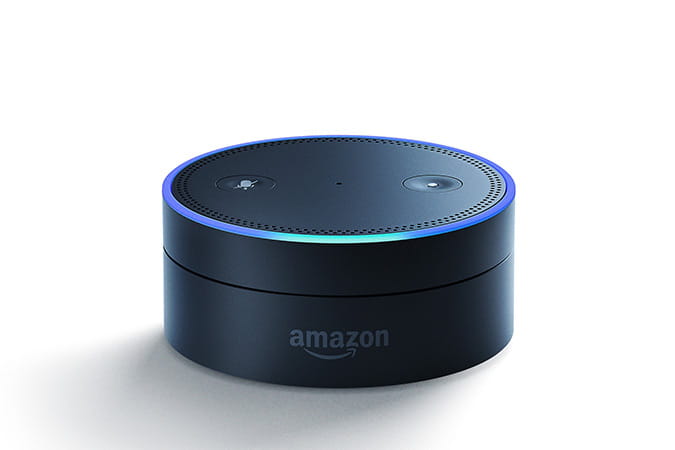
Archive | InBrief
Four ways healthcare organizations can embrace virtual assistant technology
Four ways healthcare organizations can embrace virtual assistant technology
Virtual assistant technology is primed to improve interactions across the healthcare industry; make sure your organization is ready to capitalize.
Virtual assistants are poised to transform the way people interact with information. The technology uses conversation-like exchanges to streamline everyday tasks and inquiries, and it is only going to become more prevalent: Amazon’s Echo was the company’s fastest selling holiday item this past year, and analysts expect over 20 million sales of it and competing device Google Home by the end of 2017. Analysts also expect that over 1 billion people will be using these and other conversational interfaces like Apple’s Siri and Facebook Messenger by 2018 to check the weather, place orders, and search the web for information.
The promise of virtual assistant technology for healthcare is already widely visible. Patients can count on virtual health assistants to proactively remind them to take medications, research conditions associated with various symptoms, answer common disease questions, and even find their nearest healthcare provider. Enhancing patient engagement and equipping them with 24/7 self-service capabilities through virtual assistants places less burden on payers and providers, reduces inefficiencies, and ultimately translates to less spending and more manageable healthcare costs.
Consumers aren’t the only beneficiary of virtual assistant capabilities. Consider the office manager for a healthcare provider. A common task for this person is to confirm patients’ information before their appointments. Today, the default solution is to pick up the phone and call a patient’s insurance company. The office manager will dial into an insurer’s standard hotline with a long list of patients who are scheduled to come in. Armed with patients’ information, the office manager will rattle off the names either to an agent who must type in all this data, or the office manager will attempt to navigate through a cumbersome interactive voice response (IVR) system, punching in digits or repeating their requests time and time again before finally reverting to the eventual, “Representative!” Both the office manager and agent must endure this difficult and time-consuming process to get answers to routine inquiries, such as confirming patient eligibility dates, checking the status of claims, or confirming coverage for specific procedures.
Instead of relying on the classic caller-agent interaction to complete this process, what if the office manager could instead turn to a virtual assistant technology? For routine work, we’ve imagined how a dental office manager could use Amazon’s Alexa to ask questions about patients’ eligibility, benefits, and claims status. This is a far cry from today’s inefficient process.
Not only does the virtual assistant simplify the process, but the technology also reduces the potential for human error. A typical issue for contact center agents is knowing when to NOT share information with someone. Depending on the caller – whether it’s a provider office manager, a spouse or relative of the patient, or the patient themselves – there is certain data that the agent must validate with the caller to disclose information, usually patient first and last name, date of birth, and/or an identifier such as a social security number. But because required validation information varies depending on the type of caller, there is always the chance that the agent will violate HIPAA security rules and provide personally identifiable information (PII) or protected health information (PHI) that should not be shared. By baking PII validation rules into virtual assistant technology, tools like Alexa can help ensure that patient privacy is protected.
Virtual assistant technology solves for convenience, user-friendliness, and security, and is poised to change the game in healthcare for patients, payers, and providers. So, what should your organization do? There are four points to keep in mind:
- Don’t delay. Begin working with these interfaces now to be ready. Virtual assistant technology is a whole new way of accessing information, which will have an impact on how interfaces are designed, the accessibility of data, and technology stacks as a whole. The sooner companies begin experimenting, the clearer their understanding will become of how customers will interact with them in the future and the changes that will need to be made internally to prepare.
- Begin with the basics. Start with the most transactional and routine interactions that your organization deals with. Consider the most frequent calls into your IVR or contact center. Understanding how these inquiries can be shifted to a virtual assistant will serve as the foundational framework for how the same can be done for your most complex interactions down the road.
- ‘Plug and play’ won’t work. The design of virtual assistant technology for your company won’t be simply porting web or mobile sites to a conversational interface. The inherent beauty of the technology is its ability to provide personalized and contextualized interactions. Your organization will need to learn how to apply standard human- centered design principles— such as creating personas, selecting meaningful context, testing and iterating— to create conversations that deliver real value.
- Attack from all angles. It is important to think multi-channel from the start. The same virtual assistant technology could run on web, mobile, contact center, automobile, or even robot interfaces. Customers want and demand these various communication mechanisms, so it is imperative to prepare for and accommodate each. Contexts will change the conversation – each channel has its own unique considerations to take into account.
To learn more about the trends surrounding virtual assistant technology, check out West Monroe's Infographic. Our healthcare, CX, and technology consulting professionals have experience with the challenges inherent in designing and building conversational user experiences, using new tools such as Amazon’s Alexa, Google Home, and Microsoft’s Bot Framework. Contact us for more information on how West Monroe can help enable your business to drive more powerful customer engagement using these emerging technologies.



